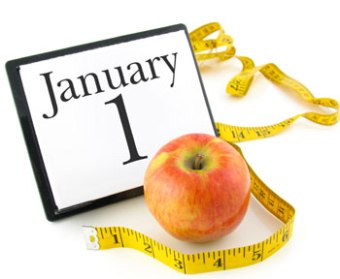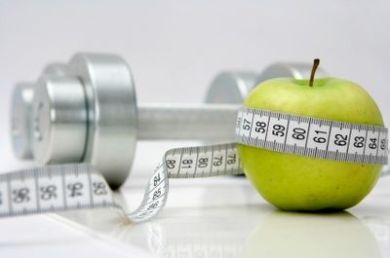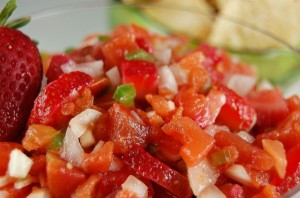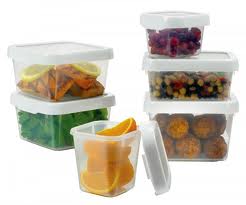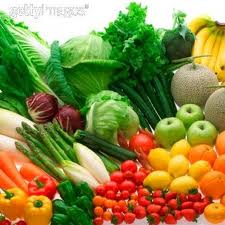
You must give up the entire concept of dieting on very low calories to lose weight. You’ll never lose weight permanently with low-calorie diets – it is physiologically impossible. Temporary dieting can only produce temporary results. You must use other methods. Let’s look at some strategies you can use to lose fat permanently while staying out of the starvation mode.
1. Adopt the “habit” mindset instead of the “diet” mindset
The first step towards losing fat permanently has more to do with your mindset than it does with nutrition or exercise. You have to change your entire attitude about nutrition and exercise.
Instead of adopting the mindset of short-term “diets,” you must adopt the mindset of lifelong “habits.” A habit is a behavior that you perform automatically without much conscious thought or effort.
Once a habit is firmly established – good or bad – it takes enormous strength to break it. It’s like trying to swim upstream against the current.
The entire concept of “dieting” for fat loss is flawed. When you say you’re “going on a diet”, the underlying implication is that it’s a temporary change and at some point you’re going to have to “go off” the diet.
With this type of attitude, you’re setting yourself up for failure right from the start.
2. Keep your muscle at all costs
The critical factor in turning your body into a “fat-burning machine” is to build and maintain as much lean body mass as possible. Muscle is the bodybuilder’s fat burning secret weapon!
Muscle is your metabolic furnace. The more muscle you have, the more calories you burn, even at rest.
With more muscle, you burn more calories even while you sleep. With a higher lean body mass, you’ll also burn more calories during exercise. If you put two people side by side jogging on a treadmill, one of them with 180 pounds of lean body mass and the other with 150 of lean body mass, the person with 180 pounds of lean body mass will burn more calories from the same workout.
The most efficient way to burn more calories and lose more body fat is to gain more muscle. That’s why weight training is an important part of the fat loss equation.
3. Use a small calorie deficit.
To lose body fat, you must be in negative calorie balance (a calorie deficit). You can create a calorie deficit by increasing activity, by decreasing calories or with a combination of both.
The most efficient approach to fat loss is to decrease your calories a little and increase your activity a lot.
The most commonly recommended guideline is to reduce your calories by 500 less than your maintenance level. For example, if you are female and your calorie maintenance level is 2100 calories per day, then a 500-calorie deficit would put you at 1600 calories per day.
If you’re a male with a calorie maintenance level of 2900 calories per day, then a 500-calorie deficit would put you at 2400 calories per day.
A 500-calorie deficit over seven days is 3500 calories in one week. There calories in a pound of fat, so (in theory), a 500 calorie per day deficit will result in aloes of one pound of body fat per week.
It follows that a 750-calorie deficit would produce a loss of one and a half pounds per week and a 1000-calorie deficit would produce a two-pound per week reduction but approach that carefully to make sure you’re not losing too much muscle.
4. Use exercise to burn the fat rather than diets to starve the fat
To lose body fat, there must be a calorie deficit. Such are the laws of thermodynamics and energy balance.However, there’s more than one way to create calorie deficit. One way is to decrease your calorie intake from food.
The other is to increase the amount of calories you burn though exercise.
Of the two ways to create a calorie deficit, burning the calories is the superior method. This is because large calorie deficits cause muscle loss and trigger the starvation response.
Ironically, most people do the opposite: They slash their calories to starvation levels and exercise too little or not at all. This causes a decrease in lean body mass and invokes the starvation mechanism.
Paradoxical as it seems, the most effective approach to fat loss is to eat more (keep the calorie reduction small) and let the exercise burn the fat.
You don’t have to starve yourself – you just have to choose the right foods and make exercise a part of your lifestyle.
Here are the reasons why exercise – not dieting – is the superior method of losing body fat:
1. Exercise – aerobic and weight training – raises your metabolic rate.
2. Exercise creates a caloric deficit without triggering the starvation response.
3. Exercise is good for your health. Dieting is harmful to your health.
4. Exercise, especially weight training, signals your body to keep your muscle and
Not burn it for energy. Dieting without exercise can result in up to 50% of the Weight loss to come from lean body mass.
5. Exercise increases fat-burning enzymes and hormones.
6. Exercise increases the cells sensitivity to insulin so that carbohydrates are burned for energy and stored as glycogen rather than being stored as fat.
5. Determine your minimal calorie requirements and never drop below them – ever!
One way to ensure that you never go into starvation mode is to determine the minimum amount of calories you can eat without slowing your metabolism.
Then, use that as your rock bottom calorie number.
Because nutrition must be individualized, it is difficult to set an absolute single figure for everyone as a minimal calorie requirement, so it is imperative to sit down with a professional to help you get as close as you can to your target number.
6. Eat more frequently and never skip meals The body interprets missed meals as starvation. Let us suppose you eat lunch at 12:00 noon and dinner at 7:00 pm.
If you skip breakfast the next day, that is 17 hours without food. This sends an unmistakable signal to your body that you are starving, even if your lunch and dinner are large meals.
Your goal should be to eat approximately every three hours. Establish scheduled meal times and stick to them. Regularity in your eating habits is critical.
By eating smaller portions more frequently, you’ll be able to eat more food than you’ve ever eaten before without being deprived or starving yourself.
Most people say they eat more on this program than they’ve ever eaten yet they get leaner than they’ve ever been before.
7. Don’t stay in a negative calorie balance long
The chances are good that you know at least one person who always seems to be on a diet. The odds are also good that although these habitual dieters may achieve some small weight losses, they are among the 95% that always gain it back.
Then, discouraged with the failure of their last diet, they quickly embark on the latest “diet of the month” and repeat the cycle.
When fat loss stops or begins to slow down after being in a substantial calorie deficit, most people panic and cut their calories even further. Sometimes this works and it breaks the plateau.
More often than not, it digs you into an even deeper metabolic rut. The best thing you can do is to raise your calories for a few days or sometimes even for a few weeks.
Your body’s weight regulating mechanism works both ways: It can decrease your rate of energy expenditure when there is a calorie deficit, or it can also increase its rate of energy expenditure when there is a calorie surplus.
When you eat more, your body burns more. A temporary increase in calories when you have hit a plateau will “spike” your metabolic rate.
It sends a signal to your body that you are not starving and that it is ok to keep burning calories.
This practice of raising your caloric intake up and down is known as “cycling” your calories (also known as the “zigzag” method).
In general, the lower you go with your calories, the more important it is to take periodic high calorie days.
We’ll take a closer look at “cycling” your calorie and macro nutrients intakes in later posts.
8. Make your goal to lose weight slowly at a rate of 1-2 lbs. per week. Be patient.
The best way to lose fat permanently without muscle loss is to lose weight slowly with a focus on exercise rather than severe calorie cutting.
We already made the suggestion to lose no more than two pounds per week. Let us take a closer look at the logic behind that recommendation.
This two-pound figure has become almost universally accepted as the standard guideline for safe weight loss.
Why? Because you can lose more than two pounds of weight per week, but you’re highly unlikely to lose more than two pounds of fat per week.
Even at two pounds per week, it’s difficult to lose 100% body fat with no loss of lean body mass!
Share our post and look us up if you have any questions
Clarence Ferguson RTSM/CMTA
Fysiques By Ferguson/Fit Body Club

